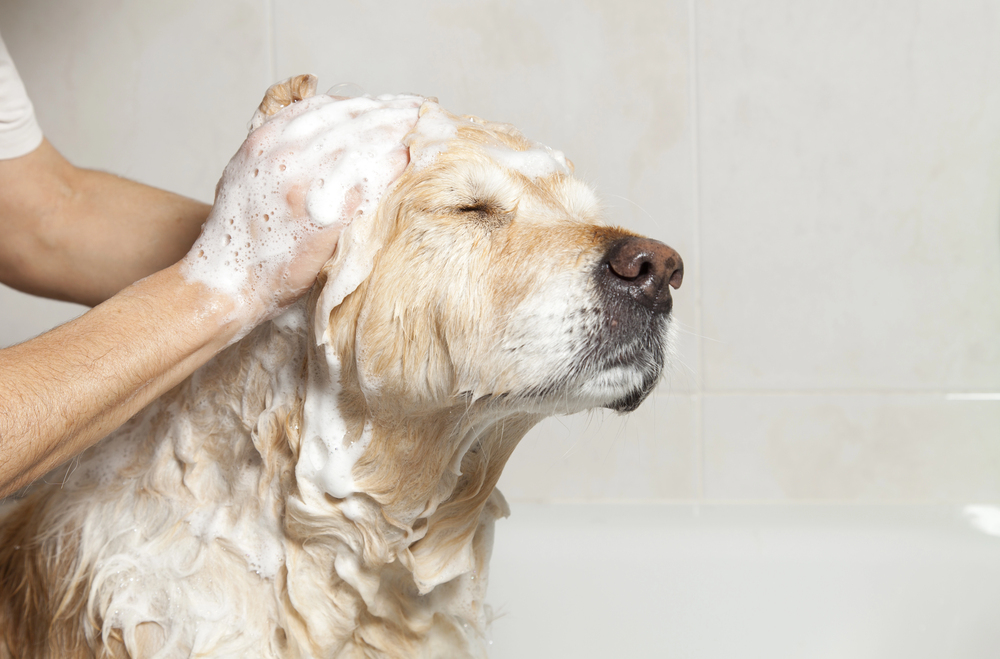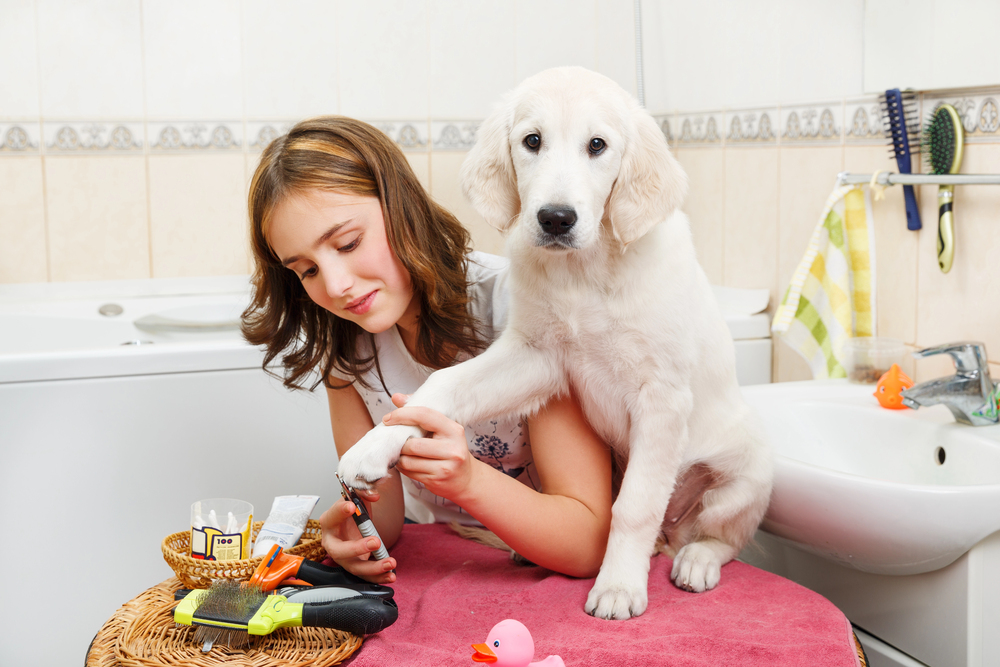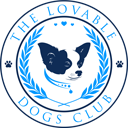Dog grooming is an integral component of overall dog wellness and happiness. It’s not merely making sure your pet remains clean and adorable—but an integral part of daily routines affecting your dog’s physical comfort, cleanliness, and even mental state. Yet for some dog owners, it’s not always quite clear when grooming time is due. So how do you determine whether your dog requires grooming? Signs depend upon the size and breed of your dog, coat type, exercise level, and season too. Identifying them at an early stage can prevent any health problems and ensure your furry companion feels at its best.
Understanding Grooming Basics
It’s useful to know what grooming is all about prior to learning about the specific signs for grooming your dog. Grooming can be anything from brushing, washing, clipping nails, cleaning ears, and even oral care. Some grooming tasks have to be done daily for some dogs while others can be done weekly, and some only once every month.
Different breeds and coat types require different grooming. A Beagle with short hair, for example, may not need as frequent brushing as a long-haired Shih Tzu, but each still needs to be groomed regularly in order to remain healthy. Some grooming can be performed at home, while other forms—such as clipping or professional styling—might necessitate a trip to a groomer.
Signs That Your Dog Needs Grooming
Visible dirt and odour
Some of the signs that your dog requires grooming include visible dirtiness or an unpleasant odor. When your dog still smells bad despite staying indoors, it’s a sure sign that they need a bath. Dogs get dirty, harboring bacteria and elements from outside fast, particularly if they love rolling in grass, digging, or investigating.
In other instances, the stink can actually originate not from fur, but from dirty ears, bad breath, or an infection of the skin. These are all locations that grooming takes care of. A grooming session takes out dirt, germs, and other debris, leaving your dog feeling clean and refreshed.

Matted or Tangled Fur
Long-haired or curly-coated breeds such as Poodles, Bichons, and Cocker Spaniels are often prone to mats and tangles. Mats can develop near the ears, under the paws, or at the back of the tail and become painful if left. Matting causes tugging at the dog’s skin and can bring about irritation, sores, and infection beneath the matted fur.
If you observe your dog’s fur clumping together or feeling rugged to the touch, an extensive brushing—or, in extreme cases, an appointment at the groomer—becomes necessary. Regular home brushing prevents matts from developing and keeps your dog’s fur soft, healthy, and radiant.
Excess Shedding
Every dog sheds to some extent, yet over-shedding can be an indication that your dog requires grooming. In spring and fall, various breeds “blow” out their coats, shedding copious amounts of undercoat hair. If you have clumps of fur all over your furniture, clothes, and flooring, your dog might appreciate a good brushing or deshedding.
Daily grooming sessions assist in shedding loose fur and managing shedding. It not only keeps your home tidy, but also prevents hair from tangling in your dog’s body.
Long or Curling Nails
If you notice clicks when your dog moves across a hard surface, their nails are too long. Overgrown nails can hurt, impact your dog’s stance, and even develop into joint issues in time. Long nails can also break, split, and curl into the paw pads, which can be really painful and hard to fix.
Regularly check your dog’s nails, particularly if they live indoors and spend little time walking outdoors on hard surfaces. Trims usually need to happen every three to six weeks, although this can be adjusted according to the dog’s lifestyle and breed.
Dirty or Smelly Ears
Dog ears can harbor wax, dirt, and moisture, particularly in floppy eared breeds such as Cocker Spaniels, Basset Hounds, or Labradoodles. If your dog’s ears reek of an odor, appear red and irritated, or in cases where your dog’s head is frequently shaken or scratched, an ear cleaning—or even a visit to the vet for an infection—could be in order.
Regular grooming involves inspecting and cleaning your dog’s ears. A groomer or veterinarian can also demonstrate for you how to properly clean your dog’s ears at home using products recommended by vets.
Bleeding, Staining, or Eye Discharge
Some breeds of dogs, such as smaller breeds such as Pugs or Maltese, can be susceptible to tear staining or tear build-up in the eyes. In cases of brown or reddish staining, crusty discharge, or tearing, grooming in and around the eyes can be necessary for your dog.
The area can be gently wiped with a soft cloth or dog-safe wipes. If there is recurring staining or discharge, speaking to a vet is advisable because it might be an eye condition or an allergy.
Itching, scratching, or licking
Frequent licking, scratching, or biting can mean your dog is uncomfortable due to unclean fur, irritated skin, or parasites such as ticks and fleas. Grooming can spot such problems early. A grooming session can eliminate allergens, dirt, and pests that are causing discomfort for your dog.
In addition, brushing daily keeps your dog’s natural oils distributed evenly, which can calm dry skin and relieve scratching. If scratching continues despite grooming, it’s time to see your vet.
Limp or Greasy Coat
A healthy coat should be shiny, soft against your hands, and feel good to touch. If your dog’s fur appears dull, greasy, or dry, grooming can usually correct this issue. Brushing massages the skin, distributes natural oils across the coat, and eliminates dirt and debris.
Bathing your dog using the right dog shampoo can also revitalize and clean your dog’s coat. Yet overbathing can dry out your dog’s skin, so grooming should be done according to your dog’s coat condition and type.

Behavioral Changes
Other times, grooming needs become apparent in changes in your dog’s behaviour. When your normally playful dog appears withdrawn, irritable, or fidgety, they might be uncomfortable due to their grooming requirements. Matted fur, overgrown nails, soiled ears, or scratching at the skin can all be uncomfortable and have an impact on mood and behaviour.
Dogs can also resist handling in areas of sores or tangles. These body language cues are your dog’s signal to you that all is not right—and grooming can be part of the solution.
When to See a Professional Groomer?
Some tasks can be done at home, yet it’s also necessary to have professional grooming done at times. If your dog has extreme matting, needs to be trimmed, or has other specialized needs (anxiety, arthritis, medical conditions), an experienced groomer can give them the care and skill they need.
A professional groomer possesses the proper equipment, knowledge, and products necessary to ensure grooming is done in an efficient and safe manner. Booking grooming appointments regularly allows your dog’s grooming to remain on track even during busy seasons.
Conclusion
Recognizing when your dog is in need of grooming is one of the key responsibilities of pet ownership. Whether tangled fur, odors, overgrown nails, or overdue for a bath, your dog provides you with ample hints when it’s time for some grooming TLC. Grooming not only keeps your dog clean and comfortable, but ties you and your dog closer and allows you to keep closer tabs on their health.
Each dog is distinctive, and grooming requirements can be dramatically different. With an understanding of what your dog needs and regular grooming practice, you can keep your dog feeling its best each day. And in those moments of uncertainty—don’t hesitate to seek out professional groomer counsel and services.

